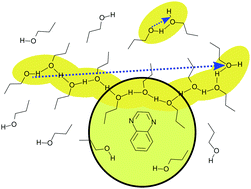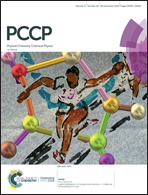Local dielectric response in 1-propanol: α-relaxation versus relaxation of mesoscale structures
Abstract
The dielectric Debye relaxation in monohydroxy alcohols has been subject of long-standing scientific interest and is presently believed to arise from the relaxation of transiently H-bonded supramolecular structures. Therefore, its manifestation in a measurement with a local dielectric probe might be expected to be different from the standard macroscopic dielectric experiment. In this work we present such local dielectric measurements obtained by triplet state solvation dynamics (TSD) and compare the results with macroscopic dielectric and light scattering data. In particular, with data from an improved TSD setup, a detailed quantitative comparison reveals that the Debye process does not significantly contribute to the local Stokes shift response function, while α- and β-relaxations are clearly resolved. Furthermore, this comparison reveals that the structural relaxation has almost identical time constants and shape parameters in all three measurement techniques. Altogether our findings support the notion that the transiently bound chain structures lead to a strong cross-correlation contribution in macroscopic dielectric experiments, to which both light scattering and TSD are insensitive, the latter due to its local character and the former due to the molecular optical anisotropy being largely independent of the OH bonded suprastructures.



 Please wait while we load your content...
Please wait while we load your content...